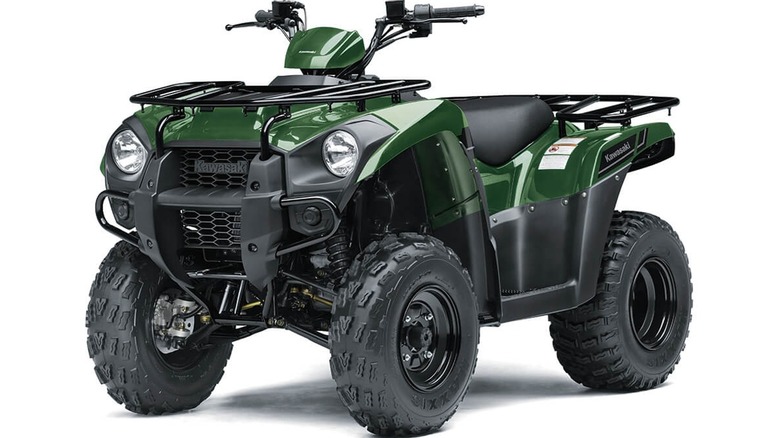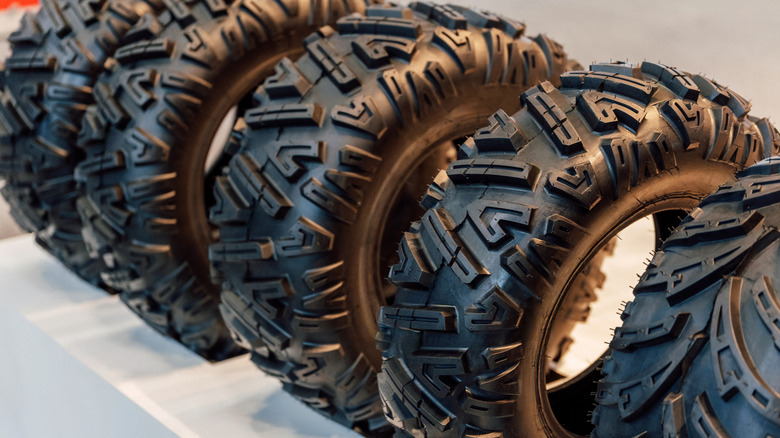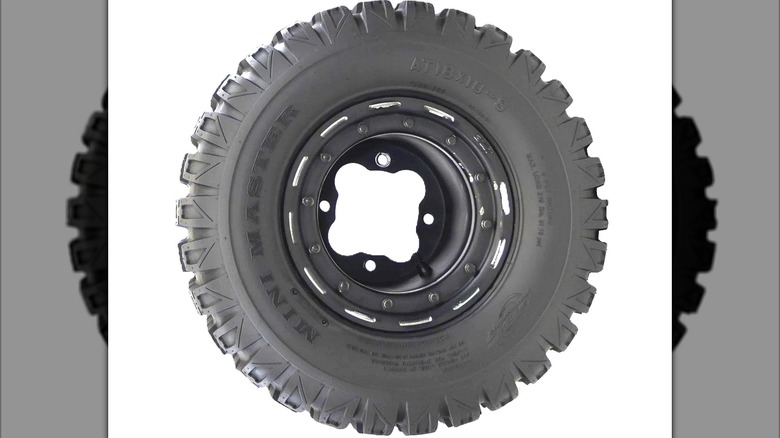Why Do ATVs Have Different Sized Tires In The Front?
We may receive a commission on purchases made from links.
Most ATVs come from the factory floor with a staggered tire setup. This means that the rear tires are wider and the front tires narrower. Essentially, since the rear wheels aren't involved with turning the vehicle, it's advantageous to make them as wide as possible for the greatest contact between rubber and trail. The more contact a tire has with the ground, the more it can grip and push the ATV through challenging terrain.
The front tires, however, are often a few inches skinnier because it allows for enhanced control when cornering. Narrower tires are more maneuverable and lighter than wider ones. In addition, slender front tires are better covered by the front fenders, which can help shield you from an onslaught of mud flying up in your face as you careen through the backcountry. Lastly, the staggered tire setup offers a certain visual aesthetic and has become an expected look. Just look at some of the coolest-looking Yamaha ATVs ever made; with a few exceptions, most of them feature narrower front tires.
Are there alternatives to a staggered tire setup?
Not every ATV has differently-sized front tires. Some riders use the same size tire on all four wheels, called a block or square setup. This arrangement provides a few advantages and could be optimal under certain conditions. For example, it's much easier to bring along a spare tire, because a single spare will fit on all four wheels. Imagine being miles into a remote trail and suffering a puncture without a replacement on hand; not fun. You can easily haul this extra tire with something like the Harbor Freight Haul-Master 300-pound Capacity ATV Cargo Carrier, which is one of many Harbor Freight products that are useful for motorcycle and ATV owners.
A block tire setup is also convenient for prolonging tire life, as you can rotate your ATV tires around. By periodically rotating the tires, each one will exhibit a more even wear pattern, which can enhance cornering and grip. However, you'll need to pay attention to the tread pattern, as some tires feature a design that works in any orientation, while other treads are designed to roll in a certain direction.
You'll want to avoid a block setup if your ATV doesn't have electric power steering (EPS). Wider tires on the front will require more force to turn the handlebars, which could lead to fatigue without any assistance.
How to read tire sizes and what ply rating means
You may have noticed that ATV tires have a series of numbers written on the sidewall. However, unless you know what each figure means, the numbers aren't all that helpful.
Let's take the image above, which shows a GBC Mini Master AT18x10-8 ATV tire. The "AT" means it's an all-terrain tire that's great for off-roading and general use. Other types of ATV tires include specialized versions for sand, mud, and racing. The first number indicates the tire's height in inches (when fully inflated), and the second figure describes the width of the tire. Finally, the third number indicates the overall diameter of the wheel. So, this Mini Master tire is 18 inches high, 10 inches wide, and 8 inches around.
One critical specification of an ATV tire is its ply rating. Essentially, ply rating is a number between two and 10 that describes how well a tire holds up to ruptures, leaks, and harsh trail conditions. Generally, the higher the number, the better a tire is for off-roading. However, a more robust ply rating does make the tire heavier.


